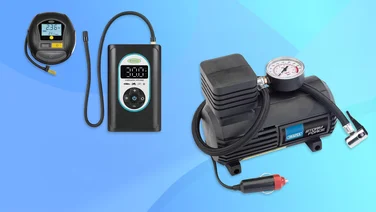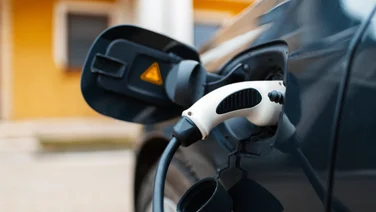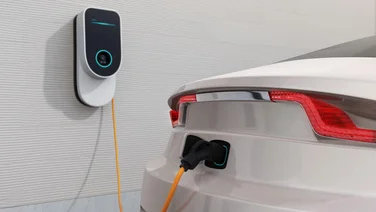To help us provide you with free impartial advice, we may earn a commission if you buy through links on our site. Learn more
- Get a free home EV charger installation quote today
- Cost of installing EV charger at home
- What affects the cost of installing an electric car charger?
- Are there any government grants?
- How is an EV charger installed?
- What do I need to install an electric car charger?
- Is it worth getting an EV charger installed?
- Home EV charging costs vs public charging costs
- Will an electric car increase my electricity bill?

It’s perfectly possible to drive an EV without having your own home wallbox charger, but relying solely on public chargers isn’t the cheapest option. To drive down your charging costs, a home wallbox charger is a very sensible investment. But how much does it cost to install an EV charger at home?
While the initial outlay of a home wallbox charger is significant, it could easily pay for itself in a few years – and it’s hard to put a price on the convenience it will bring. In fact, if you only ever cover short, round-town journeys, it’s entirely possible your home wallbox will be the only charger you’ll ever use.
With that in mind, you might be pleasantly surprised to find out how much it costs to install an electric car charger in 2023. If you would like to find out directly from suppliers near you, try our free price comparison tool – or for more information, read the guide below. In the guide, we’ll cover the costs and practicalities of buying and installing an EV charger for your home.
Get a free home EV charger installation quote today
Looking to assess the cost of a home EV charging point? Take our quick survey below and we’ll provide a quote for installation that’s tailored to your requirements.
Cost of installing EV charger at home
There are two main options when choosing your first home EV charger:
- You can speak to a local provider or qualified electrician, who’ll be able to advise you on the best approach, then will supply and fit your charger.
- Or you can deal directly with one of the major wallbox brands, which can be done mostly online; it’s quick, simple, and allows you to compare prices easily.
Costs vary from brand to brand, but you can expect to pay anywhere between £600 and £1,000 for a wallbox delivering around 7kW. More sophisticated wallboxes with their own screens can cost more, but many buyers prefer more straightforward units where advanced features are controlled by a smartphone app.
Faster wallboxes are available, offering up to 22kW, but to access these speeds you’ll need to dig deep for a three-phase power supply. Costs soar into the thousands to get a three-phase connection, and that’s before you’ve bought the wallbox.
READ NEXT: The best EV chargers for your home
What affects the cost of installing an electric car charger?
Typically, a ‘standard’ installation will be included in the purchase price. It’s probably better described as a ‘typical’ installation, where the box is fairly close to your home’s electricity meter and you’re not asking for cables to be run under floorboards, buried outside or run at height.

Typically, standard installation will include a good few metres’ run of cable along the outside of your house, the drilling and sealing of the requisite holes and ensuring the cable is properly secured to the building.
It’s worth bearing in mind that if your home electricity kit isn’t up to snuff, you may have to get that addressed before the charger is installed. Depending on what’s involved, it could be a job for your friendly local electrician, or you may have to get your utility company or UK Power Networks involved. This can be time consuming and, depending on what’s required, expensive.
But if you’re in a modern house, or one that’s been rewired relatively recently, you should be fine. The provider or electrician you use will be able to advise on all of this.
Are there any government grants?
Despite the British government’s drive to push Britain’s motorists away from combustion-engined cars and over to EVs, the grants available aren’t what they once were. The Electric Vehicle Homecharge Scheme used to cover up to 75%, capped at £500, of the costs of having a wallbox installed for homeowners.
However, in 2022 this was replaced by the EV Chargepoint Grant, which offers £350 or up to 75% of the cost to buy and install a charger. The primary difference is that the current grant is only available to EV drivers who own and live in a flat, or to landlords or the tenants of rental properties.
In Scotland the rules are slightly different, with £300 available to electric-car owners living in remote and rural areas, or on the islands of Scotland. It’s also available to those who’ve bought a used electric vehicle through the Scottish government’s Used Electric Vehicle Loan scheme.
READ NEXT: How long does it take to charge an electric car?
How is an EV charger installed?
In essence, an EV wallbox is much like any other plug socket you’ll have in your house. The primary difference is that it delivers far more power, has more sophisticated hardware and a different plug socket.
As with any kind of electrical work at home, installing an EV charger is not something to be undertaken by an amateur. Only properly qualified electricians should attempt an installation, not least because any work an unqualified person carries out could be dangerous, damaging to your car and could leave you without house insurance in the event of a fire.
Once you’ve agreed your installation, the installer will check the quality of your home’s earthing point. Depending on what they find, a replacement could be cheap and easy, or could require a costly and time-consuming visit from UK Power Networks. Once that’s done, the installer will check your home’s main fuse. Many will be rated at 100 amps, which allows plenty of headroom if you use other power-hungry appliances. You may get away with a 60 amp fuse, but try to run the wallbox, a power shower, induction hob or a hot tub simultaneously, and you might find the fuse trips out. If this applies to you, speak to your electricity provider to have it upgraded.
As long as the installer is happy with your existing hardware, the wallbox will be screwed to the wall, and a hole will be drilled to allow the cable to run from the electricity meter to the wallbox. The cable will usually run via a standalone RCD (residual current breaker) which means the installer can avoid touching the existing fuse board to minimise issues elsewhere in the property.
Once it’s all wired in, the installer will connect the wallbox to your wifi, if it requires it, and will help you set up the smartphone companion app. All that’s left is for you to plug your car in and check it all works.
What do I need to install an electric car charger?
Truth be told, you need very little to install a home wallbox charger. It’s helpful to clear the space around your electricity meter before the installer arrives, and make sure everyone in the household agrees the best place for the wallbox to be positioned: they can be moved, but it’ll require more expensive armoured cable and another visit from a qualified electrician.
Most wallboxes are ‘smart’, offering you a greater degree of control over when it charges your car, and how much it’ll cost as a result. Most smart wallboxes require an internet connection, so have your wifi password to hand. And you’ll need your mobile device to install the app. It’s worth checking all of this before the installer leaves in case of any unexpected problems.
If you’ve chosen an untethered charger you’ll need to dig the charging cable out of your boot each time you charge; tethered chargers have a cable attached – with these, you simply park up and plug in.
Is it worth getting an EV charger installed?
It is possible to run an electric car or van without a home charger, but being able to ensure you’ve a full battery whenever you leave your driveway is so much more convenient – and it’s cheaper, too.
There are even websites such as Place2Park which allow you to rent out your charger, meaning you can generate an income when you’re not using it.
Home EV charging costs vs public charging costs
With electricity prices at an all-time high, it’s more expensive than ever to charge your EV. But the same is also true of petrol and diesel.

To ensure you keep your home charging costs as low as possible, you need to ensure you’re on the cheapest energy tariff. Prices vary from tariff to tariff, but you’ll not pay more than the electricity price cap, which is currently set at 34 pence per kilowatt.
As you might expect, unless you’ve access to a handy – and possibly free – workplace charger, public charging costs significantly more. How much more depends on the provider, and often, how fast the rate of charge is.
- BP Pulse is the UK’s largest public charging network, and depending on the type and speed of the charge, and whether you’re a subscriber or not, could cost anywhere between 44p and 69p per kilowatt.
- Gridserve, which operates most motorway service station chargers, costs between 49p and 66p per kilowatt. The majority of its service station sites will cost 49p per kilowatt for low-power chargers, or 65p for its up-to-60kW chargers.
Charging a Kia Niro EV at home from 0-100% at 34p per kilowatt will cost £22, compared to £45 on BP Pulse’s most expensive tariff.
Some caveats, though: BP Pulse’s charger will take a fraction of the time, and due to the way EV batteries work, it’s likely you’d only charge to 80% from a rapid public charger.
So why would you use a public charger if home charging is so much cheaper? It all comes down to convenience: if you’re on a long-distance drive, the chances are you’ll take a 30 minute charge over a slow overnight top up every time. Fast chargers are expensive to install, and are often in expensive locations – so you’ll pay handsomely to use them.
And with some UK public charging networks having a better reputation for speed, reliability and customer service than others, many drivers are happy to pay a few pence per kilowatt more for the reassurance they’ll be able to hook up for a quick and reliable charge.
Will an electric car increase my electricity bill?
Any kind of electricity use will have an impact on your bill. If you have a smart meter installed, you’ll notice your weekly costs have increased after a charge. How much depends on how long you’re charging your car for – but you’ll still pay far less than you would to cover the same distance in a petrol or diesel car.






